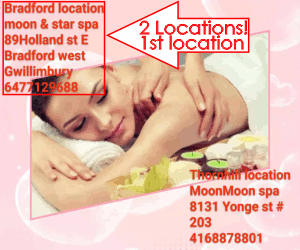The hands of a massage therapist firmly kneading her left arm, Barb Pfeiffer relaxed completely.
“Don’t let me snore,” she said. “I’m starting to fade.”
The comment, a compliment, pleased Adam DeLong. Standing at the head of the table, he smiled down at the face he could not see.
The 28-year-old DeLong has retinitis pigmentosa, an inherited, progressive disease that has robbed him of nearly all his sight.
For years, he lived in denial as the disease advanced. Only family and close friends knew of his condition.
His slowly failing vision held out long enough for him to earn two college degrees and work in the corporate world.
But in 2014, after he was laid off from his job as a market-research analyst, he finally came to terms with his blindness and redirected his life.
Now more than halfway through the massage-therapy program at Columbus State Community College, DeLong looks forward to securing a license in the summer and is thrilled about having found a new vocation.
"For most of my life, I’ve always been worried about, 'What am I going to do after I lose my vision, after I can’t do other things?' " he said, “and this has just answered so many questions for me.”
The questions began early for DeLong, whose disease was diagnosed when he was 5.
Adam is the third of four boys born to John and Anne DeLong of Toledo. Three of them — Nick, 35; Adam; and Aaron, 25 — have retinitis pigmentosa; Nathan, 30, does not, nor do his parents. Mrs. DeLong is a carrier.
The severity of the disease varies greatly, and predicting its progression is difficult. For Adam, issues with night blindness and peripheral vision began causing him problems in high school.
He briefly had a driver's license but gave it up after having several crashes, including backing into his father’s truck.
He quit football, he said, during his sophomore year at Toledo Central Catholic: “I tackled my own teammate."
He earned a bachelor's degree in psychology from Bowling Green State University, then attended Cleveland State University, from which he earned a master's in consumer psychology in 2013.
That led to the market-analyst job with Charley’s Grilled Subs, based on the Northwest Side.
In hindsight, the career choice represents “one of the worst mistakes I’ve made," DeLong said. "I loved it, but, for vision purposes, it was not good.”
He struggled to read the computer screen, compensating by enlarging the type. Only his supervisor knew that he had vision problems, although he walked haltingly and frequently stumbled.
“I don’t know why I preferred to be thought of as a drunken idiot rather than a blind person,” he said.
Once, before going on a date, he scouted out the restaurant ahead of time so that, when he and his date returned later, he would know the layout and might avoid walking into a wall or table.
Early in 2014, he met Bethany Lieb through an online dating site. He told her he had poor vision but not that he had RP. After several months of dating — mostly hanging around his apartment or in settings familiar to him — Lieb confronted him and learned the truth.
Since then, she has become one of DeLong's biggest advocates.
“I make it a point to constantly push him to accept it and embrace (blindness),” said Lieb, 27, who shares a condominium with DeLong and Rocky, a 7-year-old chocolate Labrador. “Until the last year or so, he didn’t ask for help, and it created so much stress for him."
The loss of the Charley’s job (which was unrelated to his condition) gave him the opportunity to refocus his career.
Bethany first suggested massage therapy, but DeLong didn't act on it right away. In time, though, he followed through, mindful that blind people face an astronomical unemployment rate (nearly 60 percent, according to a 2013 American Community Survey).
In China, where massage therapy originated, references to blind practitioners date to the eighth century.
Chris Danielsen, a spokesman for the National Federation of the Blind, said the organization doesn't have statistics, but the career choice isn't unusual among blind people.
"It’s one of the professions considered good for blind people, because it’s primarily working with your hands,” Danielsen said.
Rick Greely, director of the Columbus State massage-therapy program, said DeLong is just the third blind massage therapist he has encountered in 25 years.
Columbus State professors have worked to accommodate DeLong, spending extra time with him and demonstrating massage techniques by placing their hands over his and guiding him.
“He has been exceptional,” said Stan Williams, a massage-therapy instructor. “He picks things up so rapidly. And he has an amazing sense of touch.”
Pfeiffer can attest to that.
The fellow massage-therapy student received a 60-minute massage from DeLong on a recent weekday as students practiced on each other.
DeLong's vision has deteriorated to the point that he now sees only light sources and vague shapes, but he worked on Pfeiffer steadily and confidently.
“He did wonderful,” she said. “He has wonderful hands, good pressure, nice coverage.”
The key, Williams said, is DeLong's expert knowledge of anatomy and his ability to quickly find “ body landmarks.”
DeLong, who plans to complete the program in the spring, hopes to be licensed by the summer. Ideally, he would first work for a company before taking the step to open a practice.
With the new career, he said, he realizes that, despite his vision problems, his world hasn’t shrunk. Instead, it has shifted — from his eyes to his hands.
“This has been a huge weight off my shoulders,” DeLong said. “It has been great.”
More: The American Academy of Ophthalmology defines retinitis pigmentosa as a group of genetic disorders affecting the retina’s ability to respond to light. The inherited disease, which has no cure, causes a slow loss of vision, beginning with decreased night vision and loss of peripheral vision. Blindness eventually results. The disease, considered relatively rare, affects roughly 1 in every 4,000 people.
kgordon@dispatch.com
@kgdispatch
This entry passed through the Full-Text RSS service - if this is your content and you're reading it on someone else's site, please read the FAQ at fivefilters.org/content-only/faq.php#publishers.
“Don’t let me snore,” she said. “I’m starting to fade.”
The comment, a compliment, pleased Adam DeLong. Standing at the head of the table, he smiled down at the face he could not see.
The 28-year-old DeLong has retinitis pigmentosa, an inherited, progressive disease that has robbed him of nearly all his sight.
For years, he lived in denial as the disease advanced. Only family and close friends knew of his condition.
His slowly failing vision held out long enough for him to earn two college degrees and work in the corporate world.
But in 2014, after he was laid off from his job as a market-research analyst, he finally came to terms with his blindness and redirected his life.
Now more than halfway through the massage-therapy program at Columbus State Community College, DeLong looks forward to securing a license in the summer and is thrilled about having found a new vocation.
"For most of my life, I’ve always been worried about, 'What am I going to do after I lose my vision, after I can’t do other things?' " he said, “and this has just answered so many questions for me.”
The questions began early for DeLong, whose disease was diagnosed when he was 5.
Adam is the third of four boys born to John and Anne DeLong of Toledo. Three of them — Nick, 35; Adam; and Aaron, 25 — have retinitis pigmentosa; Nathan, 30, does not, nor do his parents. Mrs. DeLong is a carrier.
The severity of the disease varies greatly, and predicting its progression is difficult. For Adam, issues with night blindness and peripheral vision began causing him problems in high school.
He briefly had a driver's license but gave it up after having several crashes, including backing into his father’s truck.
He quit football, he said, during his sophomore year at Toledo Central Catholic: “I tackled my own teammate."
He earned a bachelor's degree in psychology from Bowling Green State University, then attended Cleveland State University, from which he earned a master's in consumer psychology in 2013.
That led to the market-analyst job with Charley’s Grilled Subs, based on the Northwest Side.
In hindsight, the career choice represents “one of the worst mistakes I’ve made," DeLong said. "I loved it, but, for vision purposes, it was not good.”
He struggled to read the computer screen, compensating by enlarging the type. Only his supervisor knew that he had vision problems, although he walked haltingly and frequently stumbled.
“I don’t know why I preferred to be thought of as a drunken idiot rather than a blind person,” he said.
Once, before going on a date, he scouted out the restaurant ahead of time so that, when he and his date returned later, he would know the layout and might avoid walking into a wall or table.
Early in 2014, he met Bethany Lieb through an online dating site. He told her he had poor vision but not that he had RP. After several months of dating — mostly hanging around his apartment or in settings familiar to him — Lieb confronted him and learned the truth.
Since then, she has become one of DeLong's biggest advocates.
“I make it a point to constantly push him to accept it and embrace (blindness),” said Lieb, 27, who shares a condominium with DeLong and Rocky, a 7-year-old chocolate Labrador. “Until the last year or so, he didn’t ask for help, and it created so much stress for him."
The loss of the Charley’s job (which was unrelated to his condition) gave him the opportunity to refocus his career.
Bethany first suggested massage therapy, but DeLong didn't act on it right away. In time, though, he followed through, mindful that blind people face an astronomical unemployment rate (nearly 60 percent, according to a 2013 American Community Survey).
In China, where massage therapy originated, references to blind practitioners date to the eighth century.
Chris Danielsen, a spokesman for the National Federation of the Blind, said the organization doesn't have statistics, but the career choice isn't unusual among blind people.
"It’s one of the professions considered good for blind people, because it’s primarily working with your hands,” Danielsen said.
Rick Greely, director of the Columbus State massage-therapy program, said DeLong is just the third blind massage therapist he has encountered in 25 years.
Columbus State professors have worked to accommodate DeLong, spending extra time with him and demonstrating massage techniques by placing their hands over his and guiding him.
“He has been exceptional,” said Stan Williams, a massage-therapy instructor. “He picks things up so rapidly. And he has an amazing sense of touch.”
Pfeiffer can attest to that.
The fellow massage-therapy student received a 60-minute massage from DeLong on a recent weekday as students practiced on each other.
DeLong's vision has deteriorated to the point that he now sees only light sources and vague shapes, but he worked on Pfeiffer steadily and confidently.
“He did wonderful,” she said. “He has wonderful hands, good pressure, nice coverage.”
The key, Williams said, is DeLong's expert knowledge of anatomy and his ability to quickly find “ body landmarks.”
DeLong, who plans to complete the program in the spring, hopes to be licensed by the summer. Ideally, he would first work for a company before taking the step to open a practice.
With the new career, he said, he realizes that, despite his vision problems, his world hasn’t shrunk. Instead, it has shifted — from his eyes to his hands.
“This has been a huge weight off my shoulders,” DeLong said. “It has been great.”
More: The American Academy of Ophthalmology defines retinitis pigmentosa as a group of genetic disorders affecting the retina’s ability to respond to light. The inherited disease, which has no cure, causes a slow loss of vision, beginning with decreased night vision and loss of peripheral vision. Blindness eventually results. The disease, considered relatively rare, affects roughly 1 in every 4,000 people.
kgordon@dispatch.com
@kgdispatch
This entry passed through the Full-Text RSS service - if this is your content and you're reading it on someone else's site, please read the FAQ at fivefilters.org/content-only/faq.php#publishers.

























































































